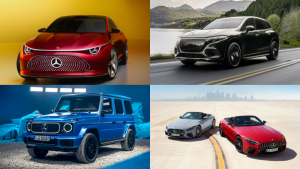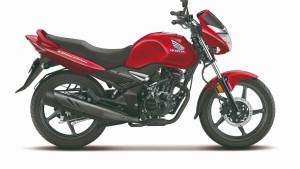Go green!
Team OD
Updated: May 09, 2013, 04:11 PM IST
I cannot think of anyone who has experienced a wider range of motorcycles on Indian roads, in our conditions, than humble (but incredibly lucky) me. In the past eleven years, everything from 80cc step throughs to 2000cc cruisers have left their imprints on my butt and left a glorious stream of happy memories in my head. Why is such self praise needed? Because I am about to make pretty big statements about the Ninja on these pages and I believe it is imperative that you understand that I speak not from the blinded-by-greatness-motorcycle-fan that I can be, but from the seasoned motorcycle tester that I hope I am.
Our first brush with the Ninja 650 came when Sirish wobbled around Bajaj's Chakan track on one and came back aglow - for once it was him glowing rather than his erm, luminous orange leathers. He was obviously impressed and we couldn't wait to see what the motorcycle would be like in the real world. My turn has now come, a full eight-odd months after that taste. And I have to say, magnifique!
The 650R in relative terms is a humble motorcycle. Also known as the ER-6F in some international markets, it competes with the Suzuki SV650, which is evidently the cornerstone of affordable, involving, huge-smiles-plastered-permanently performance. To create the 650, Kawasaki threw out the aluminium twin-spar, inline four engine sort of sports bike derived formats and thought about the motorcycle ab initio. The result has been well received abroad and I believe that will shortly be the case in India as well. The frame, then, is a simple looking tubular affair, mated to a swingarm that is braced but constructed out of elliptical section tubing. The rear shock's claim to fame is that it's mounted to one side and boasts only a seven-step preload adjustment and similarly, the front forks are right side up, have painted black bottoms and no adjustability whatsoever. Sounds unexciting, right? Wait till you hear about the engine, then.
Again, a simple liquid-cooled parallel twin, 649cc in displacement, calm in nature, 72PS in power and 66Nm by way of torque. Eight valves, twin camshafts and a six-speed gearbox and there's no tech tour-de-force in there to hold your attention, unless you still get turned on by twin injector throttle bodies that manufacturers now routinely use to smooth out fuel injection related jerkiness when transitioning from closed to opening throttle and from small throttle openings to wide open. For smoothness, there is a 180° crankshaft driven balancer shaft that in turn runs the water pump. Oil jets spray the pistons for cooling, a larger radiator helps out, and the coolant plumbing, Kawasaki repeatedly points out, is integrated into the engine cases for the best efficiency.
But before you scream in frustration, there's a method to this simple engineering. It is the simplicity of the motorcycle that makes it so appealing to our situation. It begins from when you cast eyes on the motorcycle and notice that the fairing bulges outwards a bit, which makes the bike look just that little bit portly. Nothing wrong, but current sportsbikes boast sharper, flatter bodywork so you do notice it. You do take note of the smart twin headlamps which give the motorcycle a sense of modern style that the older one - with its simple single rectangular headlamp didn't really have - and that was what the original motorcycle sported until the 1999 model update. The meters are a wide LCD expanse and that is one of the aggregates that does seem to lob your mental image up many notches and then you see the handlebar, finished in a sparkly grey but not a set of clip-ons, just a bar like you have on the Pulsar for instance.
And before you go whoa once more, let me explain how the Ninja 250R and the 650R are completely different motorcycles that share little outside of the colour of the paint and the hallowed name. The 250 is a proper, stiff sportsbike, whose job is to teach a lot of new riders the basics of what makes sportsbikes harder to ride than most other formats and by turns, that much more rewarding. The 650 isn't technically a superbike at all. It's for people who discover that the feet back and low handlebar riding positing isn't for them and that while they would like more power, they don't want the pain and expense that comes with bigger displacement, bigger power sports bikes. In keeping with that role, the 650 is supposed to feel sporty but not overly so, to feel fast without being frantic and by extension allow riders of all manners of inclinations and anatomies to have a good time.
Which is why the normal handlebar. On my 200km ride, I discovered that you could sit nearly bolt upright if you liked, tuck in with your chin on the tank if the need arose or find any set of intermediate riding positions that caught your fancy. The bars are also wide, which means maneuvering the bike in traffic is relatively easy, and there is sufficient amounts of lock available to pull tight u-turns when needed, another thing full on sportsbikes find a tad difficult to accomplish. Similarly, I discovered that you do tuck your feet back and up but only enough for the motorcycle to feel sporty. It's never cramped or too committed. Ditto the seat. It's plush, spacious and hours-at-a-time comfy - I spent from seven in the morning to seven in the evening in the saddle one way or another and my butt didn't complain even the tiniest bit.
In those twelve hours, I rode the motorcycle in traffic, down the highway, on mountain roads with and without traffic on them and on surfaces from superb to ultra-lumpy. The Ninja just gulps down variation in conditions like it was cool lemonade on a hot summer day. Its ride quality isn't plush, but it's compliant enough to quell complaints while feeling well-damped and sporty like a sportsbike should be. Very clever! The only time I got it truly annoyed was when I came around a corner and discovered that overloaded truckies had left behind rutted lanes and lumped up tar on my line. Here the suspension loses its composure a bit. But it's swell everywhere else.

And the handling similarly is alert and responsive. My initial impression was that the motorcycle felt a little long and like it didn't want to turn. Then once I erased the muscle memories of the CBR250R I had ridden to the pickup point, it felt completely natural, planted and working well with me. In not going the super-sharp sportsbike route, Kawasaki have given learning riders a great playground to get used to bigger power and motorcycles without getting into trouble.
The brakes are similar in nature as well. Gentle bite, progressively building power, almost to the point where you think that they just don't produce enough power. You're very unlikely to involuntarily stoppie the bike in a panic situation and that is a great thing. Maybe Kawasaki should have just gone the full hog and offered the ABS version here from the off.
Now, have I given you the impression that the Ninja is a bit of a fuddy-duddy? Allow me to shatter that illusion. We did a cursory VBox run as a prelude to the road test and the results are impressive. This here motorcycle will zoom to 100kmph in five seconds and hit just over 200kmph flat out. That is pretty damn fast by any standard. Still more impressive is how this power is put down. The engine starts making serious dents in the atmosphere right from 3000rpm onwards and the surge gathers momentum as the revs climb most delightfully. Cruising at 5-7000rpm is brilliant because mechanical noise is at an ebb and you sitting just below peak torque makes passes and speed adjustments ridiculously easy. Cross 7500rpm and the Ninja gets serious and when you shift up at 9500rpm, you're ready for the fun to begin again in the next gear. At a racetrack or a linked set of twisties, there is another 1500rpm of over rev still left as backup should you need it.
Playing with the engine also reveals a refined, vibration free motor that likes its job. It's usually near-silent at closed throttle and steady throttle, throaty at idle and has a lovely busy roar when you open the throttle all the way, sounding almost exactly like a thicker-voiced post-puberty Ninja 250R.
And if you think of the Ninja 250R as the first sign that India's motorcycle market is leaving it's teen angst behind and becoming a young adult, then the Ninja 650R is the right guiding hand we need at this time. Personally, this still isn't my motorcycle - I like the suffering aboard a sportsbike, the instant power, the unforgiving nature et al. But the Ninja is the motorcycle India needs. It's rapid, it's friendly, it's comfortable, it handles itself very well in typical Indian riding conditions and it comes at a very reasonable price. At Rs 4.57 lakh ex-showroom, Pune, the Ninja 650R is a steal, when compared to the higher priced Hyosung GT650R. If you called us up and asked for a recommendation for a bike falling in this budget, I'd find it very hard to recommend anything else in this price bracket. All of the other bikes - the Harleys and the Hyosungs - simply won't match this kind of performance, or this level of all-around ability.
Hell I would go so far as to say that the range of the Ninjas abilities is as wide as the selection of motorcycle I have ridden in India in the past 11 years. But that would sound immodest and boastful, so I won't. Point is, the Ninja 650R isn't just a great motorcycle for India right now, it's the correct motorcycle for India right now, which makes it that much more delicious. Come, have a taste.
Related Stories
Advertisement
Advertisement
Top Stories
Advertisement
Latest Videos
Most Popular
Advertisement
1
2
1
2
Network18 Updates
Compare











